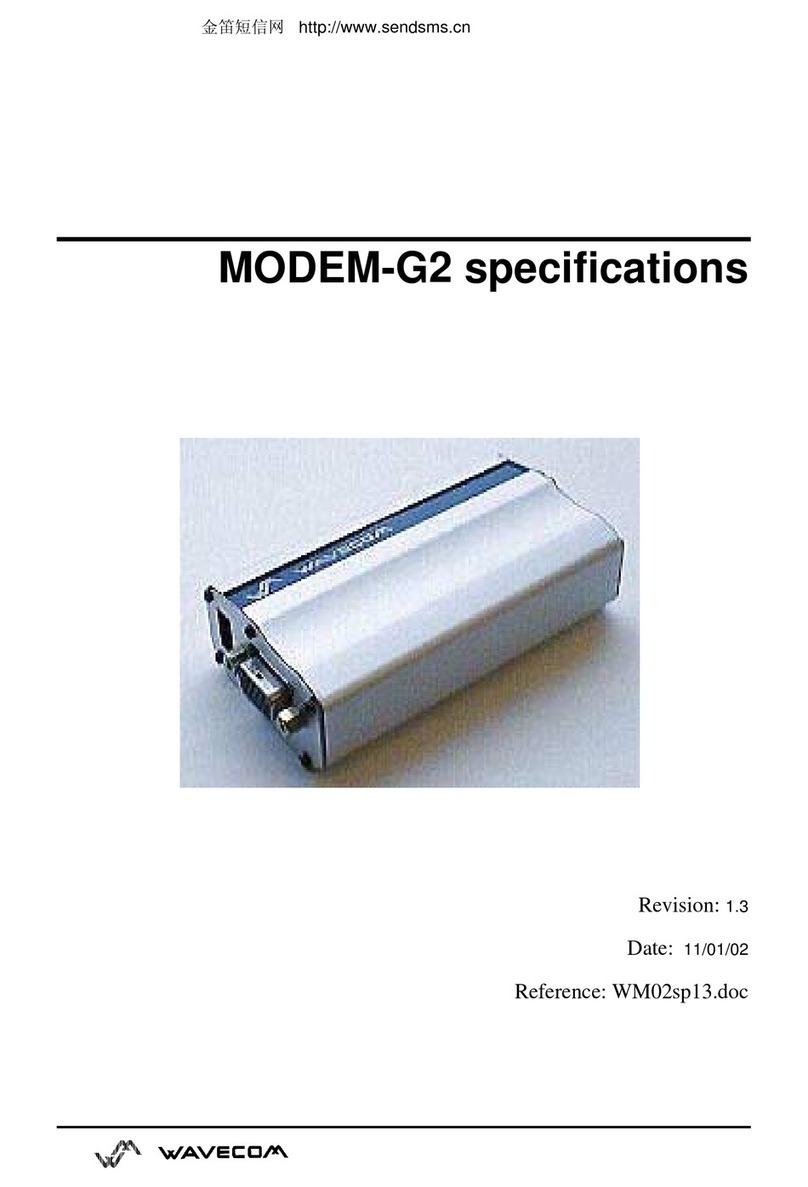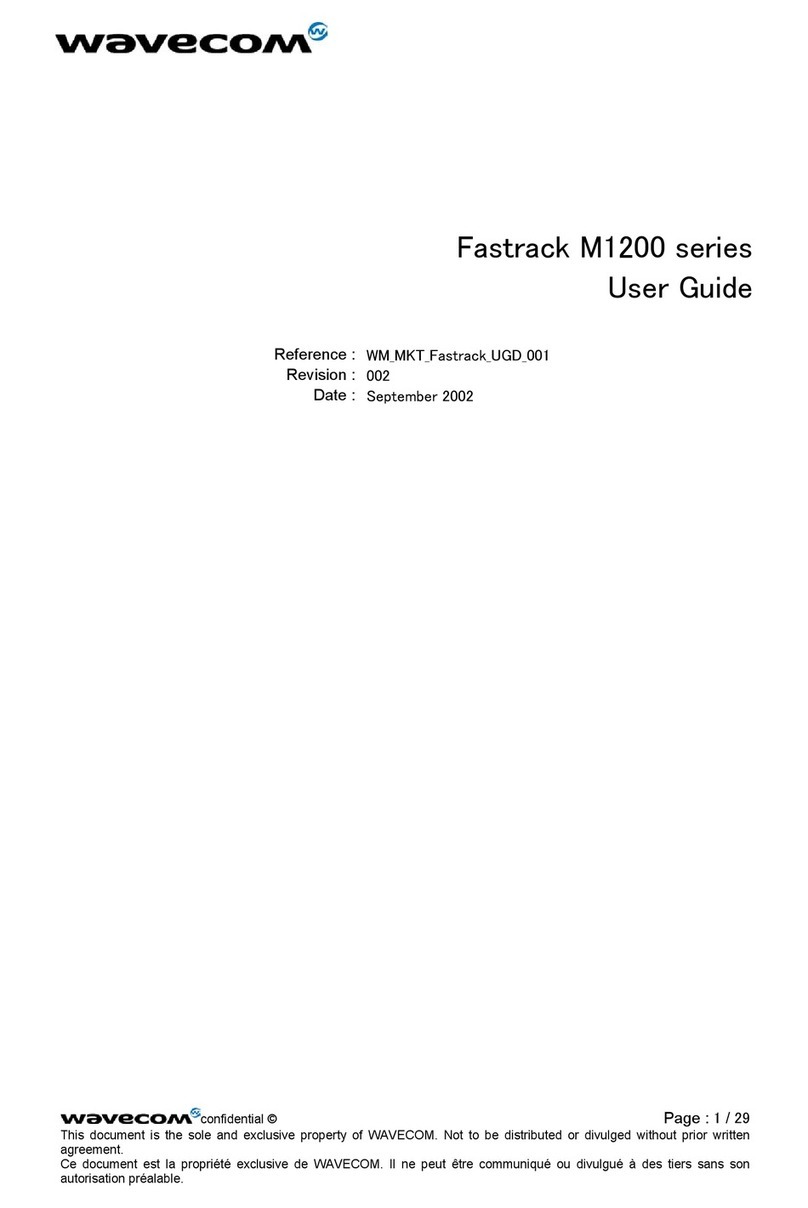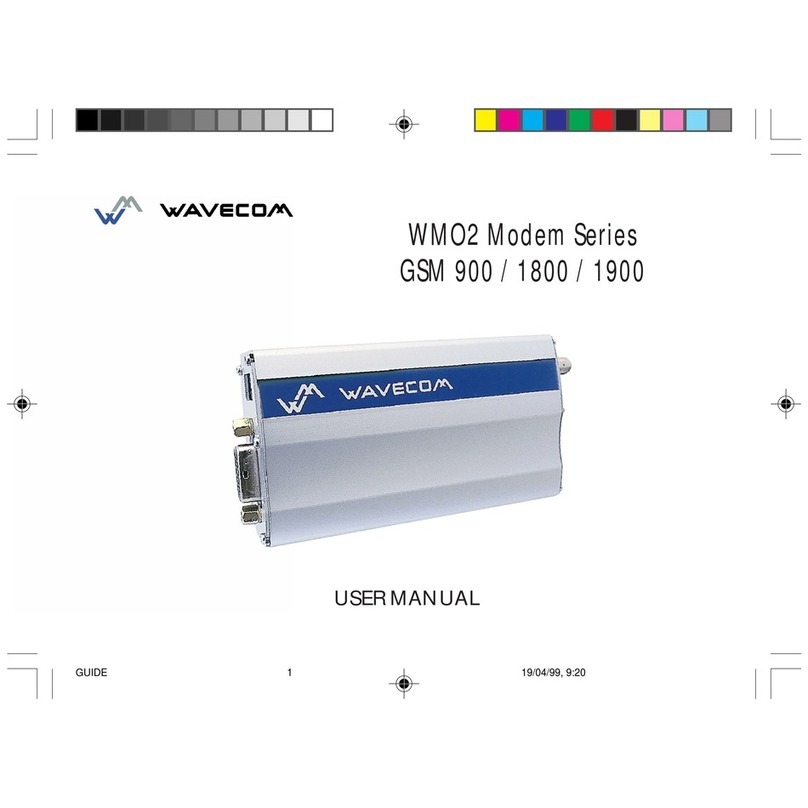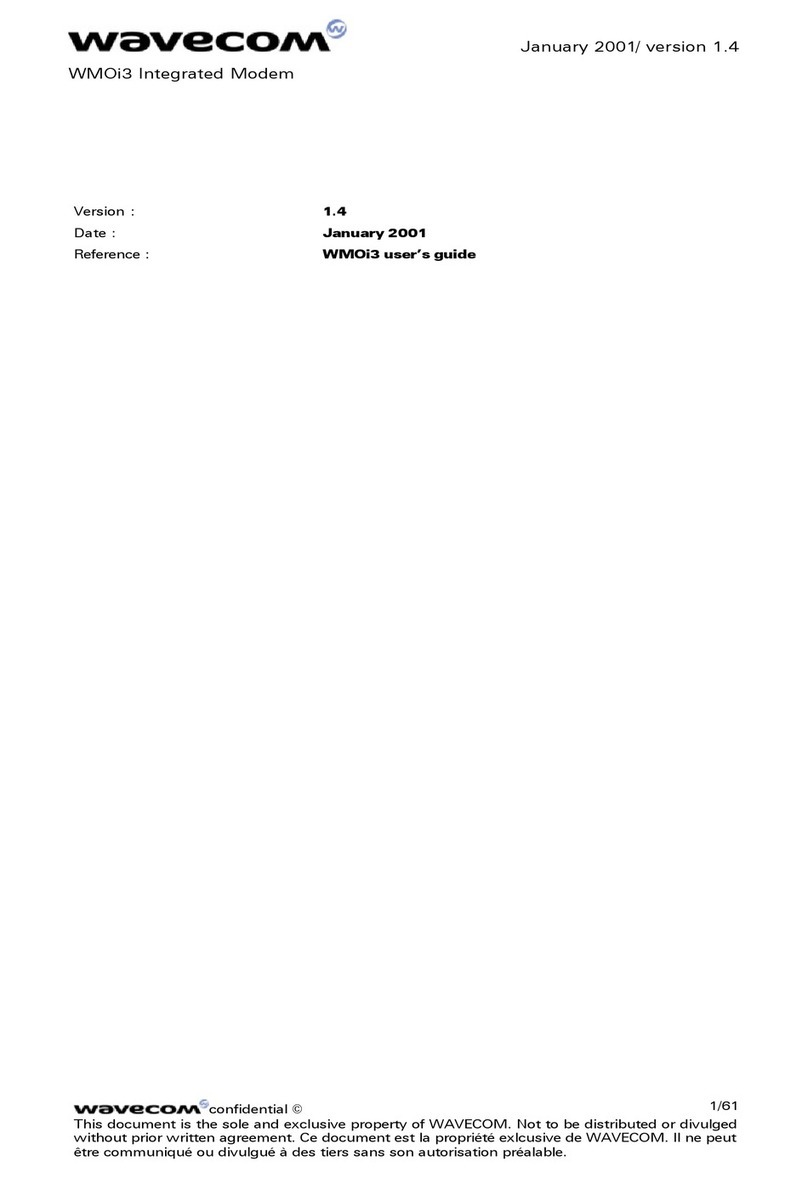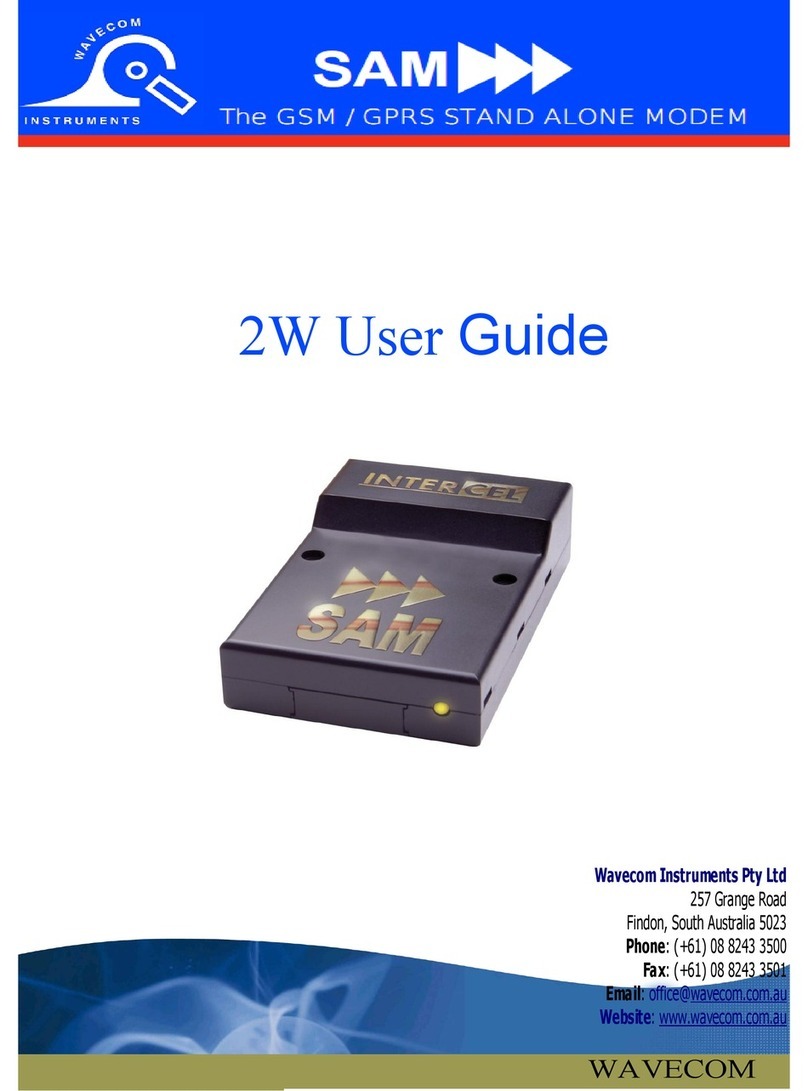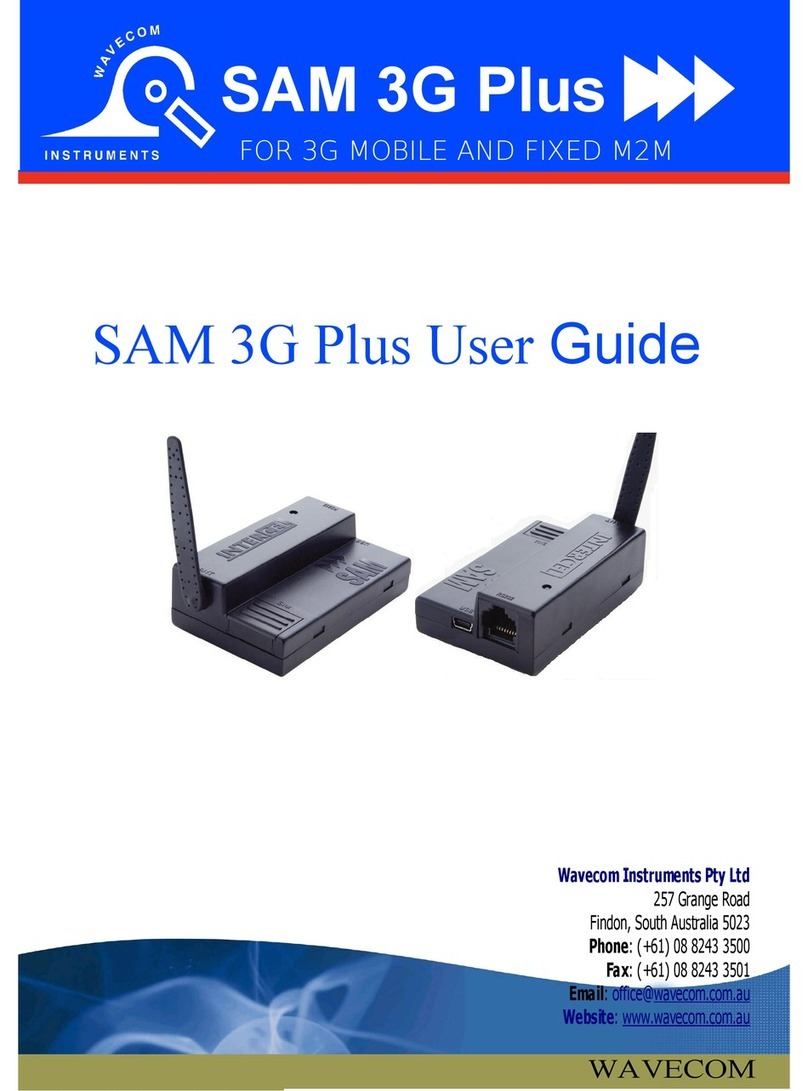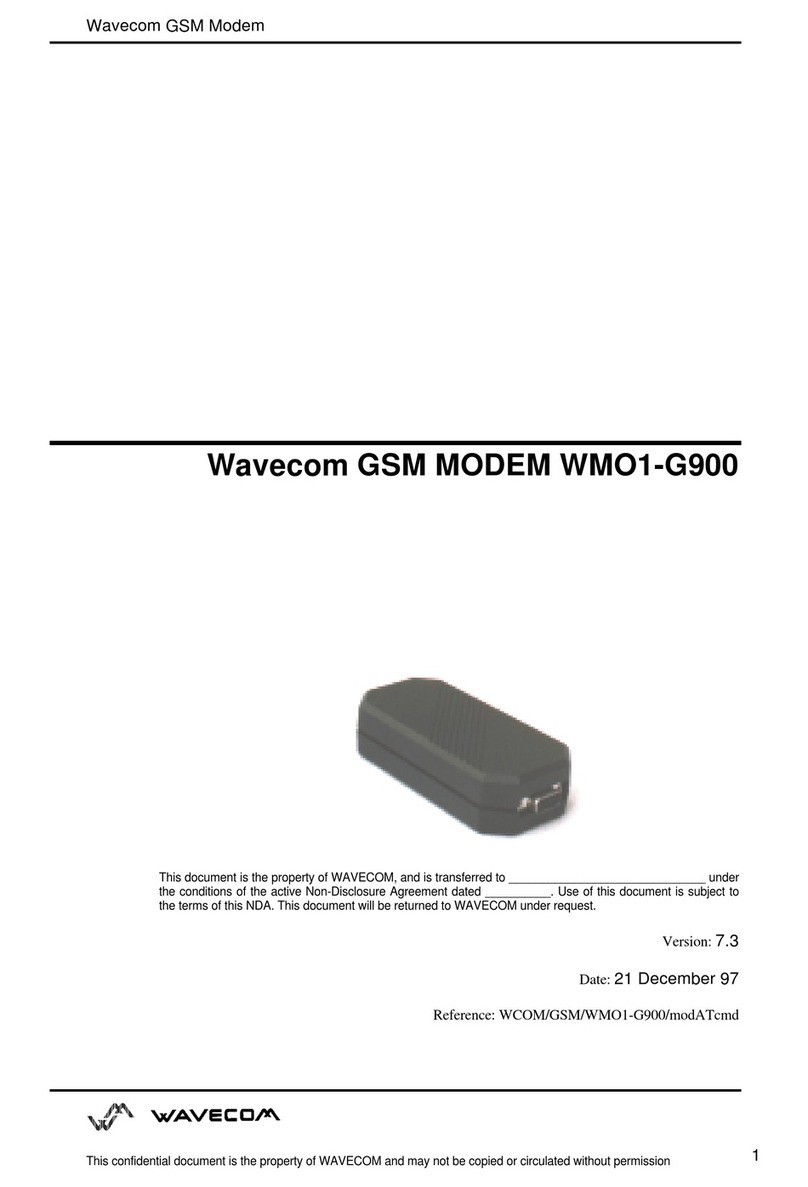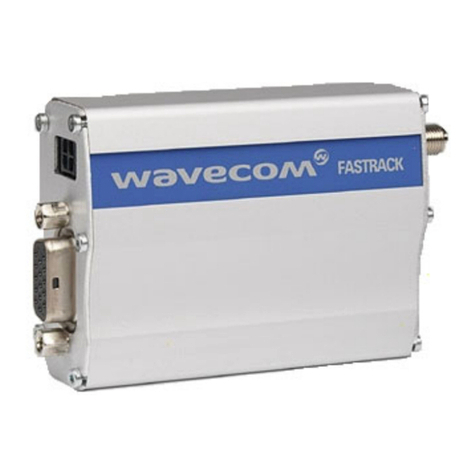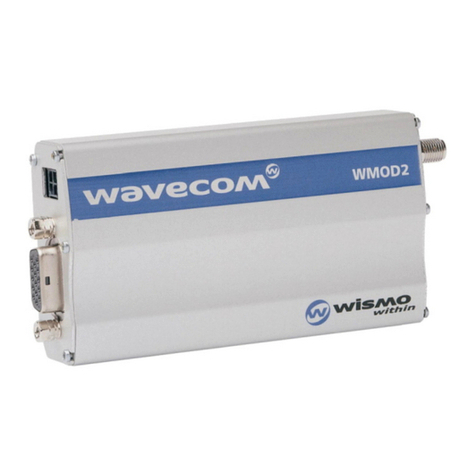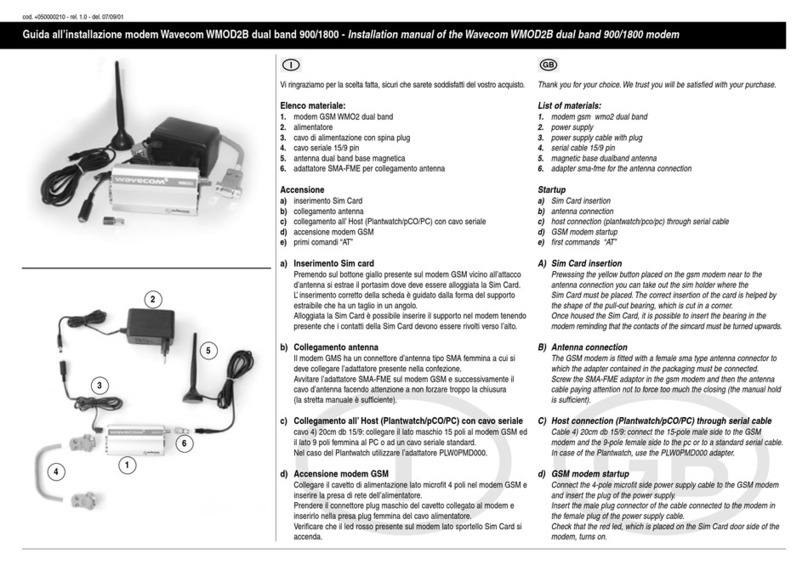WMO2 G900 / G1800 / G1900
WCOM/GSM/WMO2/WMO2ATDOC Friday 21 May 1999
WAVECOM confidential © iv
3.3 Global behaviour ......................................................................... 21
3.3.1 SIM Insertion, SIM Removal ........................................................ 21
3.3.2 Background initialisation ............................................................. 22
4Commands set......................................................................23
4.1 General commands ..................................................................... 23
4.1.1 Manufacturer identification +CGMI.............................................. 23
4.1.2 Request model identification +CGMM.......................................... 23
4.1.3 Request revision identification +CGMR ........................................ 23
4.1.4 Product Serial Number +CGSN.................................................... 24
4.1.5 Select TE character set +CSCS .................................................... 24
4.1.6 Request IMSI +CIMI.................................................................... 24
4.1.7 Card Identification +CCID........................................................... 25
4.1.8 Capabilities list +GCAP................................................................ 25
4.1.9 Repeat last command A/ ............................................................. 25
4.1.10 Power off +CPOF........................................................................ 25
4.1.11 Set phone functionality +CFUN.................................................... 26
4.1.12 Phone activity status +CPAS ....................................................... 27
4.1.13 Report Mobile Equipement errors +CMEE .................................... 27
4.1.14 Extended error report +CEER....................................................... 27
4.2 Call Control commands ............................................................... 28
4.2.1 Dial command D......................................................................... 28
4.2.2 Hang-Up command H ................................................................. 29
4.2.3 Answer a call A........................................................................... 30
4.2.4 Remote disconnection................................................................. 30
4.2.5 DTMF signals +VTD, +VTS ......................................................... 30
4.2.6 Redial last number ATDL............................................................. 30
4.2.7 Automatic answer ATS0 ............................................................. 31
4.2.8 Incoming Call Bearer +CICB......................................................... 31
4.2.9 Gain control +VGR, +VGT............................................................ 32
4.2.10 Microphone Mute Control +CMUT.............................................. 32
4.2.11 Speaker & Microphone selection +SPEAKER ................................ 33
4.2.12 Echo Cancelation +ECHO ............................................................ 34
4.2.13 SideTone modification +SIDET .................................................... 34
4.3 Network service related commands............................................. 35
4.3.1 Signal Quality +CSQ ................................................................... 35
4.3.2 Operator selection +COPS........................................................... 36
4.3.3 Network registration +CREG........................................................ 37
4.3.4 Read operator name +WOPN....................................................... 37
4.3.5 Preferred operator list +CPOL ...................................................... 38
4.4 Security commands..................................................................... 39
4.4.1 Enter PIN +CPIN ........................................................................ 39
4.4.2 Enter PIN2 +CPIN2...................................................................... 41
4.4.3 PIN remaining attempt number +CPINC...................................... 41
4.4.4 Facility lock +CLCK...................................................................... 42
4.4.5 Change password +CPWD.......................................................... 43
4.5 Phonebook commands................................................................ 44
4.5.1 Select phonebook memory storage +CPBS................................... 44
4.5.2 Read phonebook entries +CPBR .................................................. 44
4.5.3 Find phonebook entries +CPBF.................................................... 44
4.5.4 Write phonebook entry +CPBW ................................................... 45
4.5.5 Phonebook phone search +CPBP................................................. 46
4.5.6 Move action in phonebook +CPBN............................................... 47
4.5.7 Subscriber number +CNUM ........................................................ 48
4.5.8 Avoid phonebook init +WAIP....................................................... 48
4.6 Short Message Service commands.............................................. 49
4.6.1 Parameters definition .................................................................. 49
4.6.2 Select message service +CSMS................................................... 50
4.6.3 Preferred Message Storage +CPMS............................................. 50
4.6.4 Preferred Message Format +CMGF.............................................. 51
4.6.5 Save Settings +CSAS.................................................................. 51

